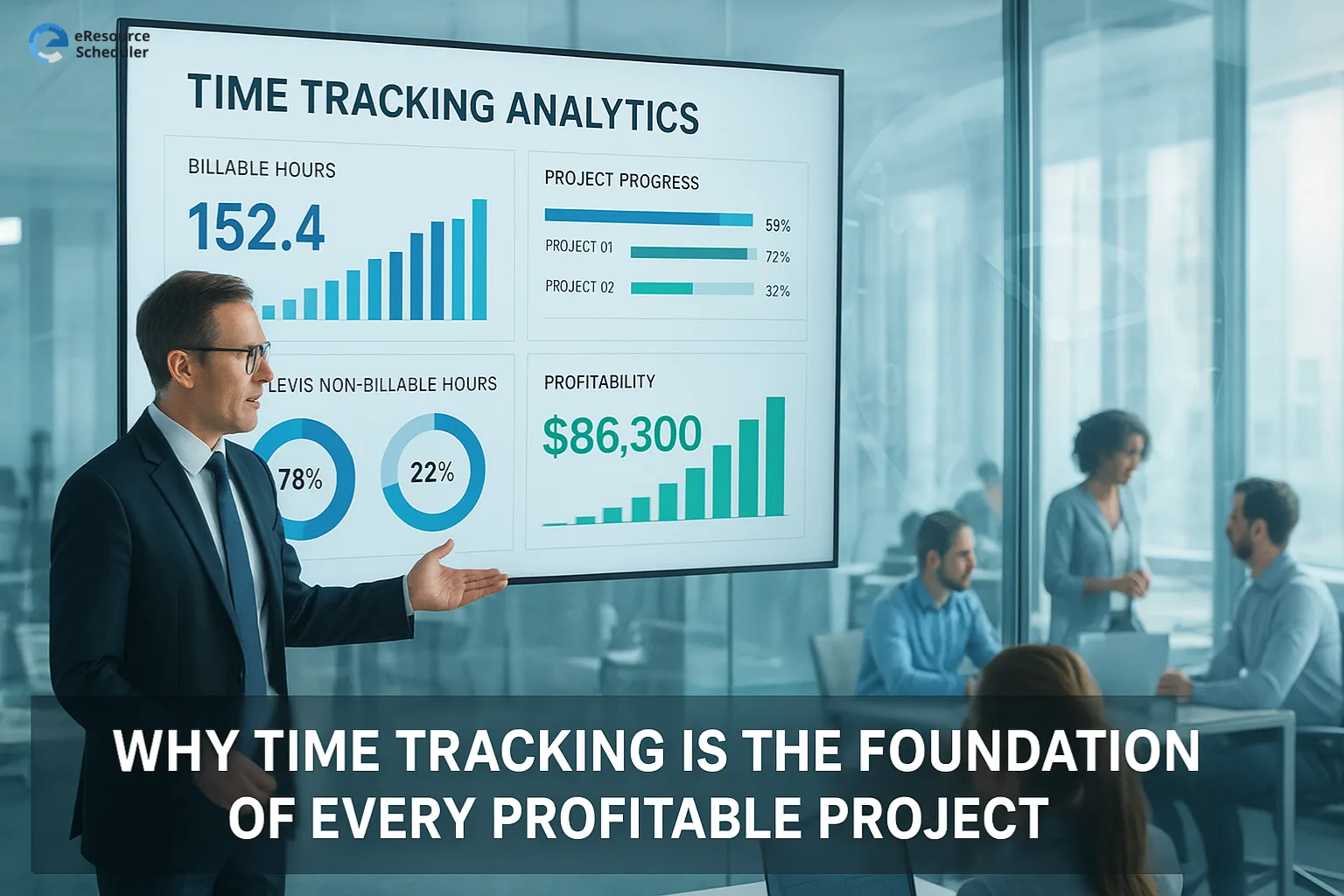Top 10 Online Speech Therapy Providers
Managing projects is the art of staying calm while spinning 15 plates in the air. All moving parts, like deadlines, clients, and teams, can easily fall out of sync.
When time tracking enters the mix, project management shifts from chaos control to clarity. Suddenly, the milestone and the budget line become measurable. You’re not just guessing where time goes because you know. And that visibility is what separates busy teams from profitable ones.
In fact, teams that use a timesheet software often uncover invisible gaps in productivity, resource usage, and billable hours that would otherwise go unnoticed.
The Hidden Link Between Time Tracking and Profit
Most project managers focus on scope, budget, and deadlines. But in the midst of all this, the how behind execution often gets sidelined. That’s where timesheets step in and answer key questions:
- Who is doing what?
- For how long?
- At what cost?
- Is that the best use of their time?
Teams get overbooked, timelines get padded with buffer, and skilled people get stuck on low-impact tasks. The result? Inconsistent delivery and underwhelming ROI.
What Time Tracking Really Means Today
For years, time tracking was just clocking in and out, basically a way to calculate payroll or invoice clients. Today, it’s the foundation of smarter, data-led decision-making.
Modern time tracking captures how employees spend their day:
- Which tasks take longer than expected
- Where distractions pile up
- Who’s overworked or underutilized
Leaders get a real look at how time is spent, not how they think it’s spent, and that’s where profitability starts to grow.
Why Every Project Manager Needs Time Data
Every PM knows the chaos of a shifting project. The client adds new requests. The scope balloons. The deadlines stay put. Time tracking with tools like eResource Scheduler gives managers the reality check they need to steer things back on course.
1. It turns hindsight into foresight
Past project data helps estimate future workloads with accuracy. If similar projects took 20% longer than planned, your next proposal will reflect that.
2. It flags scope creep before it eats the budget
When logged hours start diverging from estimates, you know something’s off. You can act before profitability takes a hit.
3. It keeps workloads balanced
Seeing who’s logging excessive hours prevents burnout and keeps team efficiency sustainable. It also shows where underutilized talent can be redirected.
Time tracking isn’t about micromanagement; it’s about management that’s actually informed.
The Business Case for Tracking Every Hour
When businesses treat time as an asset to be measured and managed, three things happen:
- Profit margins get sharper. You can see where time leaks happen and plug them early.
- Forecasting improves. Accurate data helps you plan staffing and budgets with confidence.
- Accountability rises. Teams take ownership when they see how their hours contribute to outcomes.
With the right resource scheduling software, this visibility becomes powerful simply because it links hours worked with resource capacity, availability, and timelines.
Eight Benefits That Go Beyond the Timesheet
There is much more to time tracking than only knowing when people clock in and out. Here is what it actually unlocks:
- Improved focus and productivity: When employees see where their time goes, they naturally prioritize better.
- Data-backed project management: With accurate reporting, you can pinpoint bottlenecks and optimize project flow.
- Better work-life balance: Tracking hours helps leaders redistribute workloads and reduce stress.
- Lean operations: Eliminating time-wasting tasks drives efficiency and cost savings.
- Accountability across the team: Visibility builds trust and ownership, especially for hybrid or remote setups.
- Accurate client billing: No more guesstimates. Clients pay for real time spent, building transparency.
- Smarter decisions: Patterns in time data reveal where to invest, automate, or improve processes.
- Higher job satisfaction: When people gain control over their time, they gain control over their day.
Each of these outcomes compounds into healthier teams and more profitable projects.
Introducing Time Tracking Without Resistance
Let’s be honest! Not everyone loves logging time. For many, it feels like surveillance or bureaucracy.
The fix? Transparency. Communicate openly:
- What data will be tracked
- How it benefits employees (not just management)
- What insights does it provide to make work smoother
Encourage participation by giving employees access to their own dashboards. Let them see how they spend their hours and where they can improve.
And above all, keep the system simple. The fewer clicks it takes to log time, the more accurate the data will be.
From Tracking to Strategy
Firms that treat time tracking as an admin task miss its real power. The best organizations use it as a profitability dashboard showing where time, money, and capacity truly go.
That visibility answers questions like:
- Which projects consistently go over budget?
- Which clients consume the most unbilled effort?
- When will we need to hire again?
- Which service lines deliver the highest margins?
These aren’t accounting questions but growth questions. And the answers come from disciplined time tracking using software like eResource Scheduler.
How Time Data Feeds Growth
When you pair time tracking with clear project data, you get a decision-making engine. Here’s how that plays out in practice:
1. Real-time control
You don’t have to wait for month-end reports to spot issues. Data-driven dashboards show live performance across projects.
2. Proactive planning
Time data predicts when your team will hit capacity. That means hiring and resourcing decisions happen before crunch time.
3. Profit-first mindset
You stop seeing time as just a number on a sheet. It becomes a resource to optimize the same way finance teams manage cash flow.
In short, time tracking transforms intuition into intelligence.
Time Is Profit’s Best Friend
You can’t control every project variable. But you can control who’s doing what, when, and for how much, because that’s where profit is hiding.
In today’s economy, no business can afford to treat time tracking like an afterthought. It’s not admin. It’s a strategy. Software like eResource Scheduler helps businesses:
- Allocate with precision
- Forecast with confidence
- Deliver with consistency
And most importantly, protect project profitability. Because margins aren’t found at the end of the project. They are made before the work even begins.
In a world obsessed with doing more, the smartest teams focus on doing it better with fewer mistakes, faster execution, and strategic use of talent. Accurate time tracking is your project’s financial backbone.
FAQ
- Why is time tracking important for project profitability?
Because it reveals where every billable hour actually goes. Accurate tracking helps teams improve profit margins through data-driven decisions. - How does time tracking improve resource management?
By showing real-time utilization and availability, it helps managers assign the right people to the right tasks and prevent overbooking or burnout. - What’s the difference between basic timesheets and modern time tracking?
Traditional timesheets record hours worked; modern time tracking tools like eResource Scheduler connect that data to budgets, resources, and timelines for complete project visibility. - How can teams overcome resistance to time tracking?
When employees see how tracking benefits them, they are more likely to adopt it willingly. - How does eResource Scheduler support effective time tracking?
It centralizes time data, integrates with resource scheduling, and delivers real-time insights that help organizations forecast accurately, stay on budget, and protect profitability.





